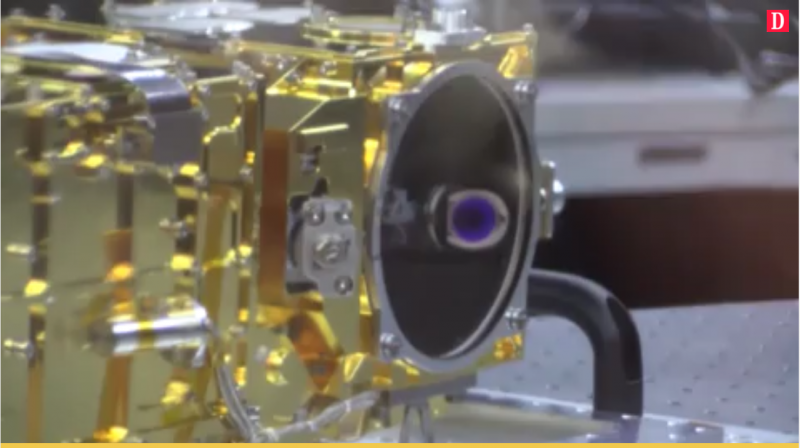The SuperCam instrument soon to be delivered to NASA
The Mast Unit of the SuperCam instrument of the American Mars 2020 mission will soon be delivered to NASA’s space research center, the JPL (Jet Propulsion Laboratory – Pasadena-USA), in order to be integrated at the top of the rover mast of the Mars 2020 mission.

This mission is to explore the planet Mars by depositing a rover on the Jezero crater that will collect Martian samples. SuperCam will be essential to characterize and select these rock and soil samples that can be recovered and sent to Earth during subsequent missions.
SuperCam will carry out focused laser shots which, after analysis, will provide the chemical composition of the rocks. It carries a Raman spectrometer and an infrared spectrometer. Their use will give the mineral composition of the rocks and detect the possible presence of organic molecules. A colour camera will provide context images and a microphone will record sounds on Mars for the first time.
SuperCam’s scientific objective: to study the geological diversity of Mars and detect traces of possible past life forms.
SuperCam is the result of a close collaboration between the Los Alamos National Laboratory (United States) and the Institut de recherche en astrophysique et planétologie (IRAP-OMP – CNRS/CNES/UT3 Paul Sabatier), with a contribution from the University of Valladolid (Spain). Under the responsibility of CNES, the design and manufacture of the French part of SuperCam (called the “Mast Unit”) are coordinated by IRAP. Other CNRS and university laboratories (OMP, LAB, LESIA and LATMOS) also contribute to elements of the instrument. Sylvestre Maurice, astrophysicist at Toulouse III University – Paul Sabatier, is the scientific manager of the SuperCam instrument.






